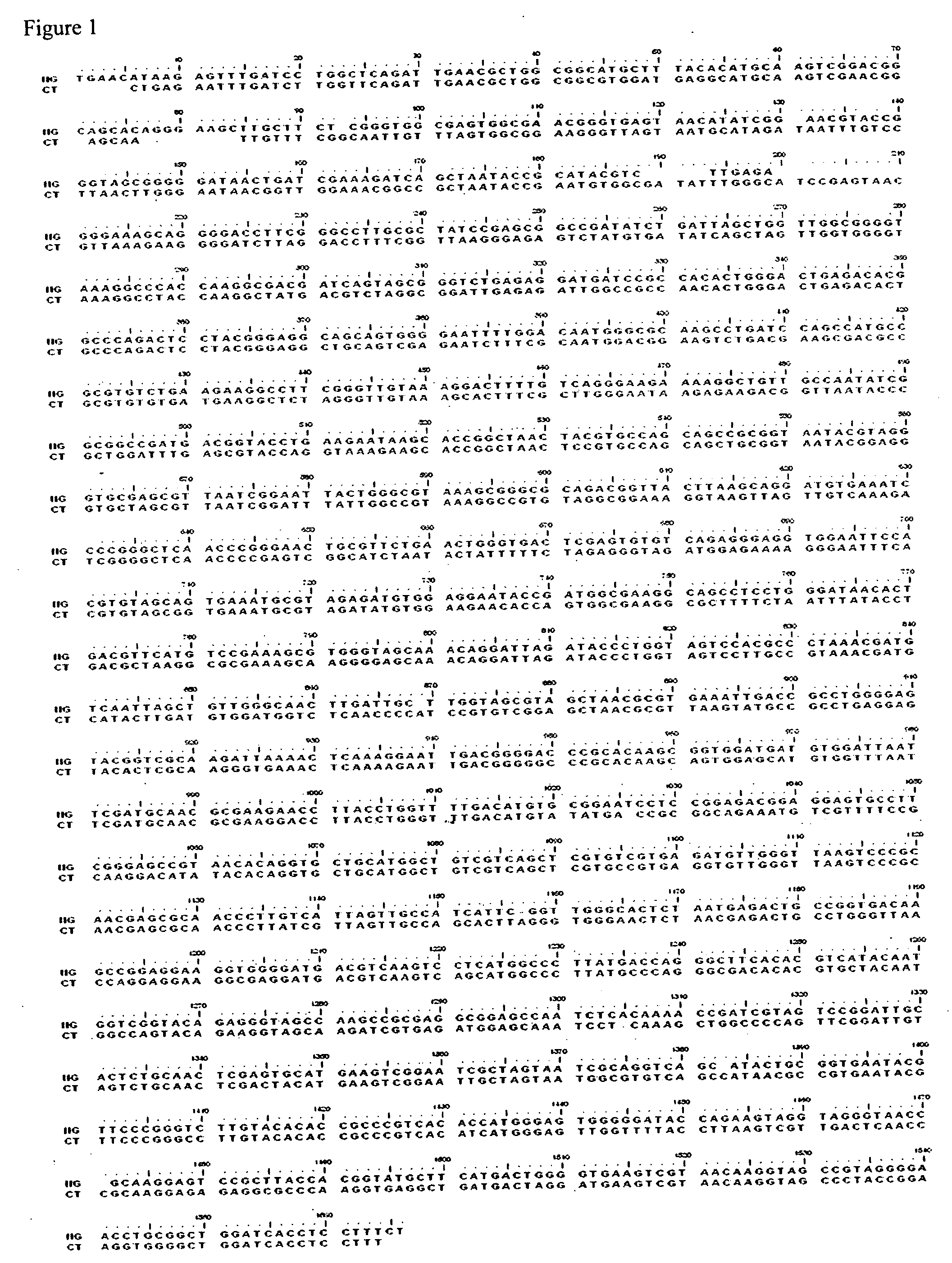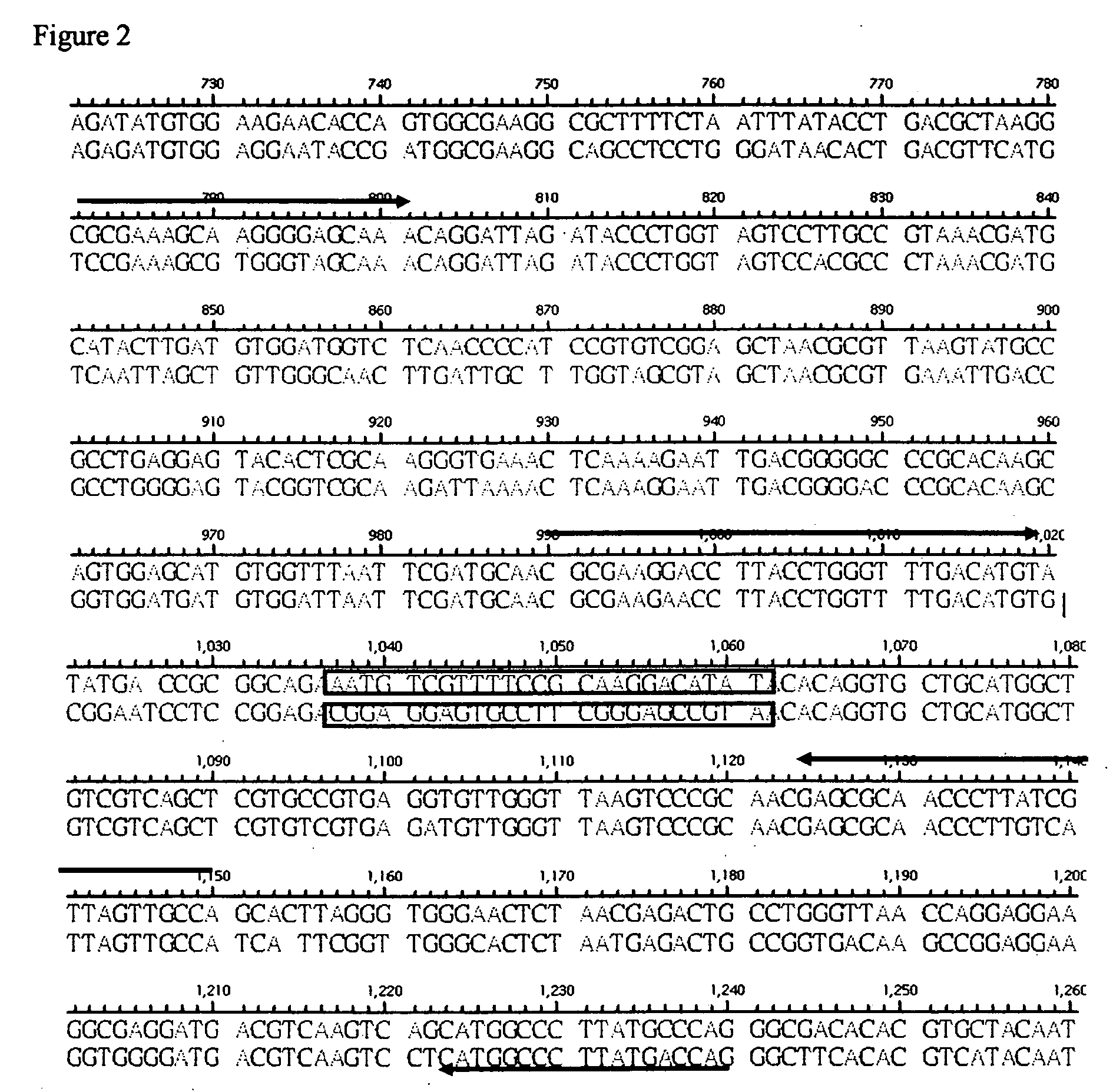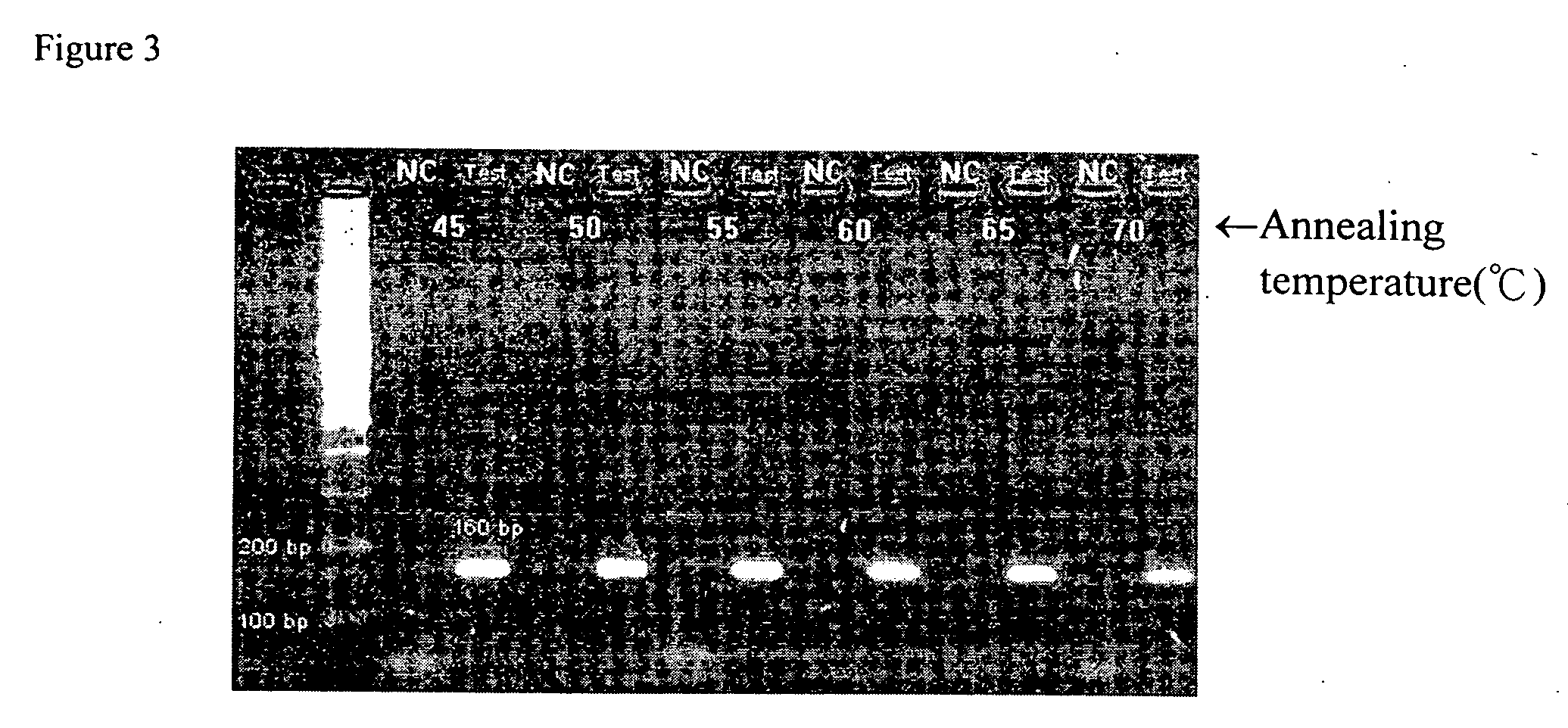Novel method for diagnosing pathogens of sexually transmitted diseases
a technology for sexually transmitted diseases and pathogens, applied in specific use bioreactors/fermenters, biochemistry apparatus and processes, after-treatment of biomass, etc., can solve the problems of inability to diagnose and treat traditional infections, sexually transmitted diseases (stds) are a major health problem, and information is useful but limited
- Summary
- Abstract
- Description
- Claims
- Application Information
AI Technical Summary
Problems solved by technology
Method used
Image
Examples
example
Example 1
Sequence Alignment and Primer Probe Search
[0053] The sequences of 16S rRNAgene of N. gonorrhoeae and C. trachomatis were analyzed by software DNAsis to screen conserved regions of them. The primer was designed based on the conserved region, and the probe was further designed based on the specific sequences among the conserved region.
[0054] The DNA alignment result as shown in FIG. 1, there presented 72.4% homology between N. gonorrhoeae and C. trachomatis. A conserved region was screened from 957 bp to 1131 bp. The enlarged figure of this conserved region was showed in FIG. 2. The two fragments, underline 1 and underline 2, are identical sequences between N. gonorrhoeae and C. trachomatis. The sequences of underline 1 and underline 2 were designed as forward probe (F) and reverse probe (R), respectively. Further, the fragment with undulant underline was specific to each pathogen. The sequences of the fragment were designed as specific probe.
example 2
Preparation of Clinical Sample
[0055] SWAB: The sampled swab was placed into 15 ml centrifugal tube containing 2 ml 1×PBS, then vortex for 1 min to separate the adherent components. The sampled swab was clipped by burnt tweezers, and all liquid was squeezed out from swab. The 15 ml tube was centrifuged in 3000 rpm for 5 min. The suspension was removed. 100 μl PCR buffer, Tween 20 (0.45%), and proteinase K were added, then mix completely. Transferred to 1.5 ml Eppendorf and sat at 55° C. for 1 hour, then held in 95° C. for 10 min to remove proteinase K activities. The final mixture could be proceed to PCR directly, or stored at −20° C. until use.
[0056] URINE: The former section of urine was collected about 20˜30 ml from patient. The urine was placed into 50 ml centrifugal tube. The tube was centrifuged in 12,000 rpm for 30 min and then the suspension was removed. 100 μl PCR buffer, Tween 20 (0.45%), and proteinase K were added and mixed completely. Transferred to 1.5 ml Eppendorf an...
example 3
[0057] The sequences of the primer set were 5′-CGCGAAGAACCTTACCTGGTTTTG ACATG-3′ (F) and 5′-GGCAACTAATGACAAGGGTTGCGCTC-3′ (R). 50 μl PCR reactions contained 1×PCR buffer containing 1.5 mM MgCl2 (GeneTeks Bioscience Inc.), 2 μM each primer, 2 mM of each dNTP (ProTech), 2 U Taq polymerase and 2 μl template. The thermal cycling conditions were 94° C. for 5 min and 30 cycles of 94° C. for 45 s, 60° C. for 30 s, and 72° C. for 30 s with final extension at 72° C. for 10 min in a MyCycler Thermal Cycler (Bio-Rad). 160 bp PCR products were electrophoresed through a 2% agarose gel containing 1 μg / ml ethidium bromide.
[0058] To screen the proper annealing temperature of the primers for better nucleic acid replication in PCR, the DNA of N. gonorrhoeae was used and six different annealing temperatures including 45° C., 50° C., 55° C., 60° C., 65° C., and 70° C. were selected to test. The result showed in FIG. 3, the suitable annealing temperature of the primer set was ...
PUM
| Property | Measurement | Unit |
|---|---|---|
| Fraction | aaaaa | aaaaa |
| Electrical conductance | aaaaa | aaaaa |
| Electrical conductance | aaaaa | aaaaa |
Abstract
Description
Claims
Application Information
 Login to View More
Login to View More - R&D
- Intellectual Property
- Life Sciences
- Materials
- Tech Scout
- Unparalleled Data Quality
- Higher Quality Content
- 60% Fewer Hallucinations
Browse by: Latest US Patents, China's latest patents, Technical Efficacy Thesaurus, Application Domain, Technology Topic, Popular Technical Reports.
© 2025 PatSnap. All rights reserved.Legal|Privacy policy|Modern Slavery Act Transparency Statement|Sitemap|About US| Contact US: help@patsnap.com



